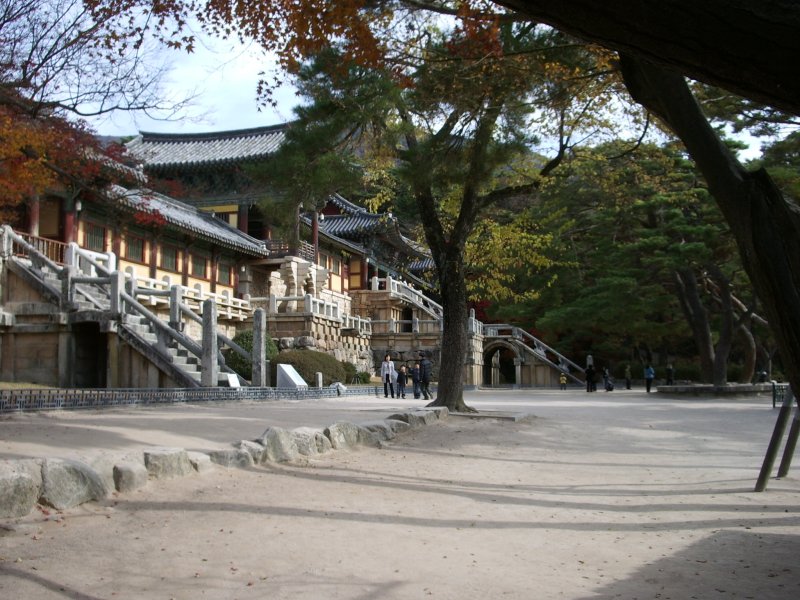
South Staircases
National Treasures #22, #23
Bulguksa Temple (map)
Unified Silla
East Gyeongju, Korea
Bulguksa is one of the best-known temples in Korea, having been completed in 774 to demonstrate the kingdom's Buddhist allegiance. It is not one of the biggest, but artistically one of the best. The temple was burned to the ground during the Hideyoshi invasions. Later it was reconstructed and restored, most recently from 1969-1973.
The south wall, seen in these photos, incorporates two staircases that are National Treasures. The upper photo is taken from the east end of the wall. At the photo right (east) we see Sokgyemun (NT #23), a staircase that is the main entrance of the temple (although modern visitors enter elsewhere, to preserve the structure). It leads up to Jahamun (Mauve Mist Gate), and from there into the temple. Its lower flight is called Cheongungyo (Blue Cloud Bridge), and the upper is Baegungyo (White Cloud Bridge).
The open pavilion at photo center left is the bell tower, Beomyeongnu.
At the far left (west) is Anyangmun, another gate, with its own staircase consisting of Yeonhwagyo (Lotus Flower Bridge, lower flight) and Chilbogyo (Seven Treasures Bridge, upper flight). This staircase is NT #22. The names of its two flights derive from the Lotus Sutra, and are echoed by the twin pagodas inside the temple. Anyangmun means "Paradise gate," appropriately to its location in the west.


